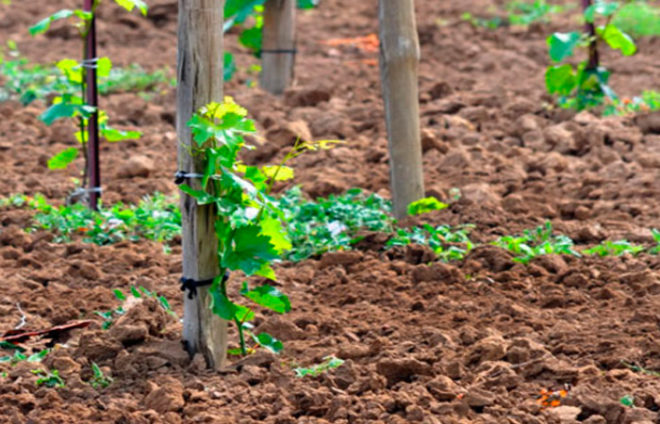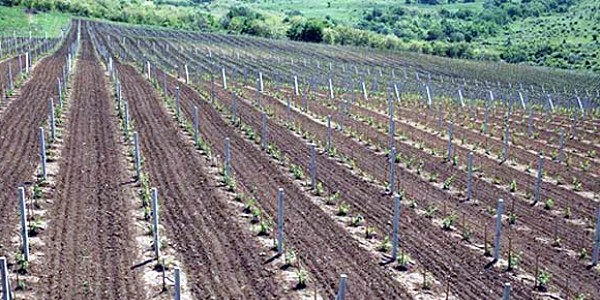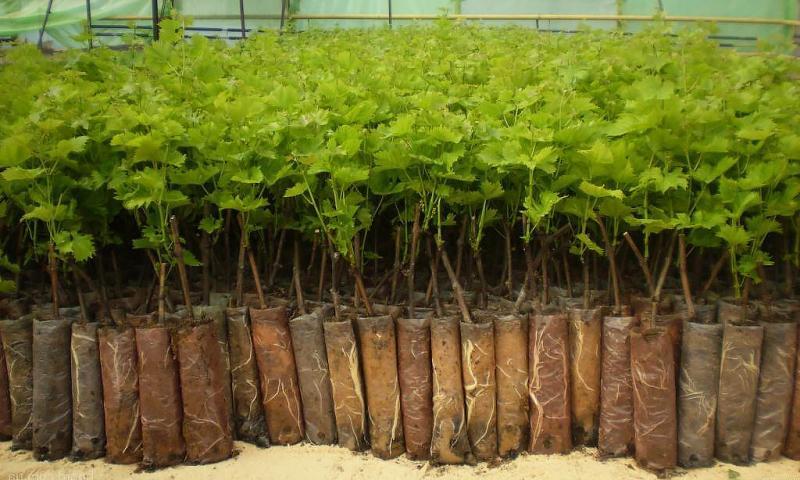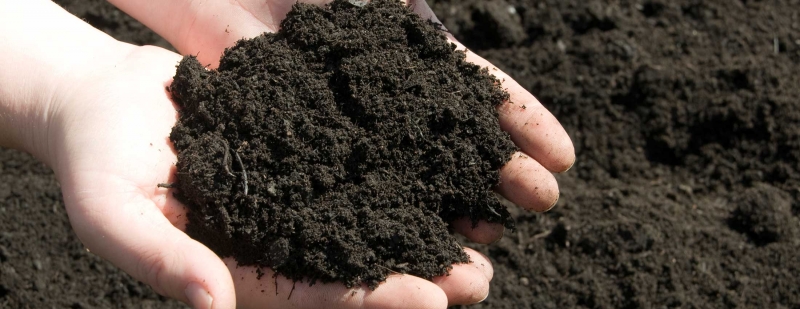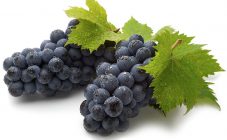When planting, vine soil is the most important element that needs careful consideration. If you know what kind of land is suitable for grapes, you can grow a gorgeous vineyard, delighting with the most juicy bunches.
When choosing a soil, you need to understand by what criteria they are distinguished. First of all, these are:
- density;
- acidity;
- heat capacity;
- organic;
- structure;
- hygroscopicity;
- breathability;
- the content of macro- and microelements.
Thus, they distinguish: clay, loamy, peat, calcareous, sandy, sandy loam, chernozem soils.
Clay soil is very dense, it contains up to 80% clay. It can easily be shaped into various shapes without cracking, and is pliable and smooth when wet. Air permeability is very poor, due to which organic matter is poorly decomposed. Such soil warms up with difficulty, as it gives up water, and its acidity is high.
Loamy soil, although it looks like clay, but its properties are very good for vegetable gardens. The composition is balanced (various impurities, sand up to 60-90%, and clays from 10 to 30%). The acidity is neutral. The density of the earth is such that it allows you to give any shape and it will be preserved, however, cracking should be expected.
There is a fine-grained structure that allows air to pass through without problems, and impurities create the ability to retain moisture for a long time. Many gardeners choose loamy soil because of its versatility and good fertility. Almost all cultures take root on such land.
The peat type of soil is extremely acidic, capable of swamping. He warms up badly too. However, it is quite simple to cultivate it, for this they use sand or clay flour, organic matter, potassium-phosphorus fertilizers and various microbiological additives so that organic matter decomposes even faster. On such a site, it is better to add loam to the hole before planting the culture. Currants, strawberries, gooseberries grow very well on peat soil, but not grapes.
In turn, calcareous soil can be either heavy or light, it has a number of disadvantages. The disadvantages of this type of soil include a low content of nutrients, stony, low acidity, too fast drying. To prepare it for growing something, you cannot do without potash fertilizers, increasing acidity due to urea, frequent mulching, adding organic fertilizers and green manure. And such soil will be able to retain moisture only due to frequent loosening.
Sandy soil naturally contains a lot of sand. In structure, it is loose, light and does not retain any moisture or nutrients at all. However, it does not take much time to warm up, the air passes through it well. Since the water quickly leaves, alkalis and salts are washed out, and therefore the soil becomes acidic.
Sandy loam soil contains up to 80% sand and 20% clay. This is another type of soil loved by gardeners and does not require much cultivation effort. Such a substrate is not heavy, it retains moisture, heat, and organic matter remarkably. Its fertile characteristics can be maintained with mineral or organic fertilizers, green manure and mulching.
Chernozems are considered the crown of fertility and productivity.Due to its composition and lumpy-granular structure, moisture remains for a long time in this type of soil. It always contains enough minerals and humus. However, it is sometimes required to carry out preventive fertilization and green manure in order to avoid depletion. Alkaline-acid balance is achieved through mineral additives, sand and peat can help reduce excess density.
What soil is needed for grapes
In terms of composition, the soil for grapes is most suitable for mixed and black earth. It is good if it includes sand, fine stone, clay, mineral and organic substances.
Separately, it is worth considering what kind of soil grapes love in terms of chemical composition, because it directly affects the growth rate and the entire development process. For normal formation in the soil should be:
- Calcium (thanks to it a powerful root develops).
- Nitrogen (affects the growth of grapes: with a deficiency, there is a lag in development, and with an excess, there is more greenery than needed, and this is bad for the fruit).
- Sulfur (is a constituent of proteins and serves to dissolve mineral supplements).
- Iron (promotes the release of chlorophyll, without which plant nutrition would be inadequate).
- Magnesium (its role is participation in the formation of chlorophyll, therefore, if it is insufficient, the leaves turn yellow and crumble).
- Phosphorus (normalizes fruiting, but with an excessive amount of it, the growing season is greatly shortened).
- Potassium (the taste depends on it: the less it is, the more acid, in addition, potassium regulates the metabolic processes of the plant and strengthens the general immunity).
What acidity is needed for grapes?
Soil acidity (pH) can be acidic, neutral or alkaline. It is best to plant the crop in soil with a pH of 4.0–8.0. If the indicator is higher, the root system will not be able to absorb nutrients.
Which place is suitable for planting vineyards?
The right place will make it easier for the gardener to care for the grapes. The culture loves sunlight and should receive it all daylight hours, so the southern slope is perfect.
It is desirable that the site has a low level of groundwater (no higher than 2 m). If there is too much water, the roots will simply start to rot.
The grape culture does not tolerate northern winds and drafts. Optimal placement of the vineyard near the walls of buildings or a fence. In addition, the buildings heat up all day and share heat with the grapes, which has a beneficial effect on it.
Also, grapes should not have competitors for nutrients, therefore, seedlings should be grown away from other trees and crops.
What soil can be planted grape cuttings
The strongest one-year-old vine seedlings should be kept in containers and stand on a windowsill or in greenhouses. The soil for grapes at home can be prepared from peat and purp, mixed in equal proportions.
Water the workpieces with a solution of ammonium nitrate (1.5 g per 1 l) and superphosphate (3 g per 1 l).
Grown cuttings that have reached 30 cm are planted in open soil in spring when it warms up enough.
How to prepare a site for planting grapes
The soil for transplanting cuttings is harvested in the fall. It must be thoroughly dug up and fertilized. Since the crop prefers light, loose and warm soil, soil preparation is as follows:
- Before planting, dig up the soil 60-100 cm so that the upper layers are below. Prepare a landing trench or holes.
- Leave them open for the winter so that the earth subsides, absorbs moisture and freezes a little (freezing kills all pests).
- To improve water permeability and air permeability, broken brick, crushed stone, small stones are laid to a depth of no more than 20-30 cm. Rotted manure or humus can have the same effect.
- With the onset of spring and warmth, the soil is ready, you can safely transplant the cuttings.
What other soil types can be adapted for grapes
If there is no loamy, sandy loam or chernozem land on the ground, and you really want to do viticulture, you can try to adapt a different type of soil on your own.
On clay soil, the grapes will be bad, since air and water will not flow to its roots, but you can try to improve the situation. So, heavy clay soil is loosened with green manure or straw, the introduction of a large amount of manure will help.
Manure and other organic fertilizers will also help with sandy soils, which overheat in summer and freeze in winter. They increase the water holding capacity of the soil. Mulching with all available materials will help with the problem of moisture loss. It is advisable to make a layer of mulch at least 7 cm. Siderates that prevent the washing out of nutrients will not be superfluous.
Since one and the other type of soil has high acidity, every five to six years it neutralizes the acidic environment with chalk, lime or dolomite flour (400-1000 g per 1 m2).
The owners of a summer house or land plot, who want to become winegrowers, have no obstacles to fulfill this desire. The main thing is to figure out what kind of land the grapes love, water it on time, loosen it and apply fertilizer. If the plant is comfortable, delicious poured bunches will not be long in coming during the harvest season.

